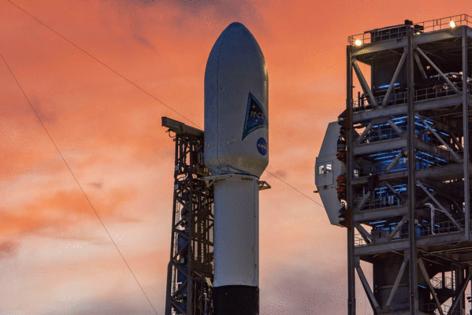First new national security launch awards go to SpaceX
Published in News & Features
The U.S. Space Force on Friday announced the first two task orders under a revamped five-year program that awards national security missions. Both went to SpaceX.
Elon Musk’s SpaceX, longtime national security provider United Launch Alliance and newcomer Blue Origin, founded by Jeff Bezos, were all eligible to compete for the National Security Space Launch Phase 3 Lane 1 task orders, having been chosen in June out of seven bids to provide launch services for the Department of Defense.
Any one of the providers is allowed to compete for task orders once opened up by the Space Force as long as it has made a successful orbital launch prior to the proposal’s due date.
Phase 1 and Phase 2 doled out mission orders to just SpaceX and ULA. Phase 3’s approach is to break up contracts into two lanes.
Lane 1 is actually supposed to be the new method that opens up NSSL missions to newer launch providers, with the likes of Firefly Aerospace, Rocket Lab and Relativity Space potentially entering the fray someday, but for now, SpaceX landed the first two contracts worth more than $733.5 million that will require nine launches.
Seven will be for the Space Development Agency (SDA) while two will be for the National Reconnaissance Office (NRO), with the missions targeting late 2025 and 2026 for launch.
Lane 1 of the NSSL program is designed for payloads that are more “risk-tolerant” in the event of a launch issue, while Lane 2, the contracts for which have yet to be announced, will be for the most “risk-averse” payloads.
“In this era of great power competition, it is imperative to not leave capability on the ground,” said Brig. Gen. Kristin Panzenhagen, program executive officer for Assured Access to Space in a press release. “The Phase 3 Lane 1 construct allows us to execute launch services more quickly for the more risk-tolerant payloads, putting more capabilities on orbit faster in order to support national security.”
While SpaceX landed the first two of what is expected to be at least 30 mission orders worth more than $5.6 billion over the next five years in Lane 1, Space Systems Command’s Lt. Col. Douglas Downs applauds the program and expects more players at the table soon.
“Industry stepped up to the plate and delivered on this competition. Our innovative dual-lane strategy is enabling a streamlined process from mission acquisition to launch, getting our assets on orbit for our warfighters’ benefit more quickly,” Downs said. “Plus, with the ability to on-ramp new providers and systems annually, we expect to see increasing competition and diversity.”
Rocket Lab, for instance, is developing its medium-lift rocket Neutron while Relativity Space is working on its 3D-printed heavy-lift rocket Terran-R. Northrop Grumman is working with Firefly Aerospace to redevelop its Antares rocket and Firefly has its own medium-lift rocket plans.
For now, the DOD has deemed that only the launch capabilities of Blue Origin’s New Glenn, ULA’s new Vulcan Centaur and SpaceX’s Falcon 9 and Falcon Heavy rockets have the capacity to hit all of its required satellite deployment needs.
Blue Origin, though, has yet to fly, and would need two certification flights before it could launch any NSSL mission. Vulcan Centaur has already won NSSL contracts under Phase 2, and has a backlog of 25 missions to fly among contracts awarded during that phase’s 2020-2024 fiscal years.
Phase 3 is for 2025-2029 with Lane 2 contract announcements expected later this fall. The Space Force said it could award up to three contracts in that lane, but what their value would be, or how much more beyond Lane 1’s $5.6 billion was not announced. Space Systems Command, though, manages a $15.6 billion annual space acquisition budget for the DOD.
The entirety of Phase 2’s task orders — which fell to just ULA and SpaceX, and would have included missions that in Phase 3 have been broken up into Lane 1 and Lane 2 —totaled more than $8.5 billion for missions awarded during its five-year run.
Several more Lane 1 task orders will be announced in the third quarter of 2025, which is from April-June next year. The 2025 fiscal year runs from October 2024-September 2025.
And while only three companies have been onboarded with indefinite delivery, indefinite quantity contracts, the DOD plans annual opportunities to bring in more, with the next window happening before the end of the year.
“As we anticipated, the pool of awardees is small this year because many companies are still maturing their launch capabilities,” said Panzenhagen back in June. “Our strategy accounted for this by allowing on-ramp opportunities every year, and we expect increasing competition and diversity as new providers and systems complete development.”
_____
©2024 Orlando Sentinel. Visit orlandosentinel.com. Distributed by Tribune Content Agency, LLC.







Comments